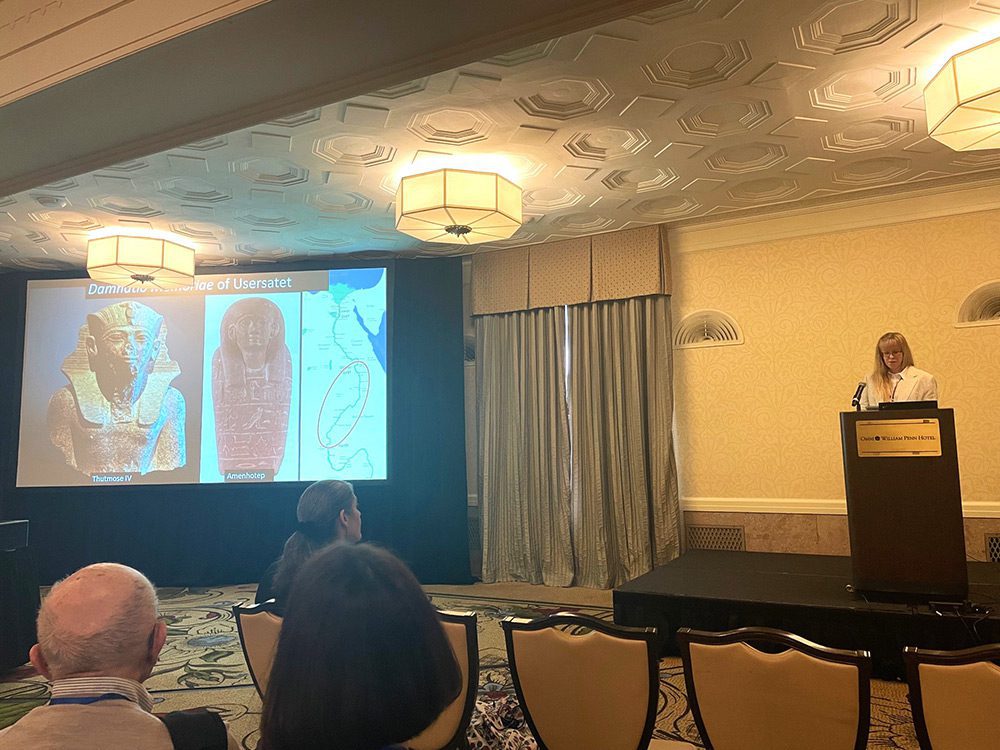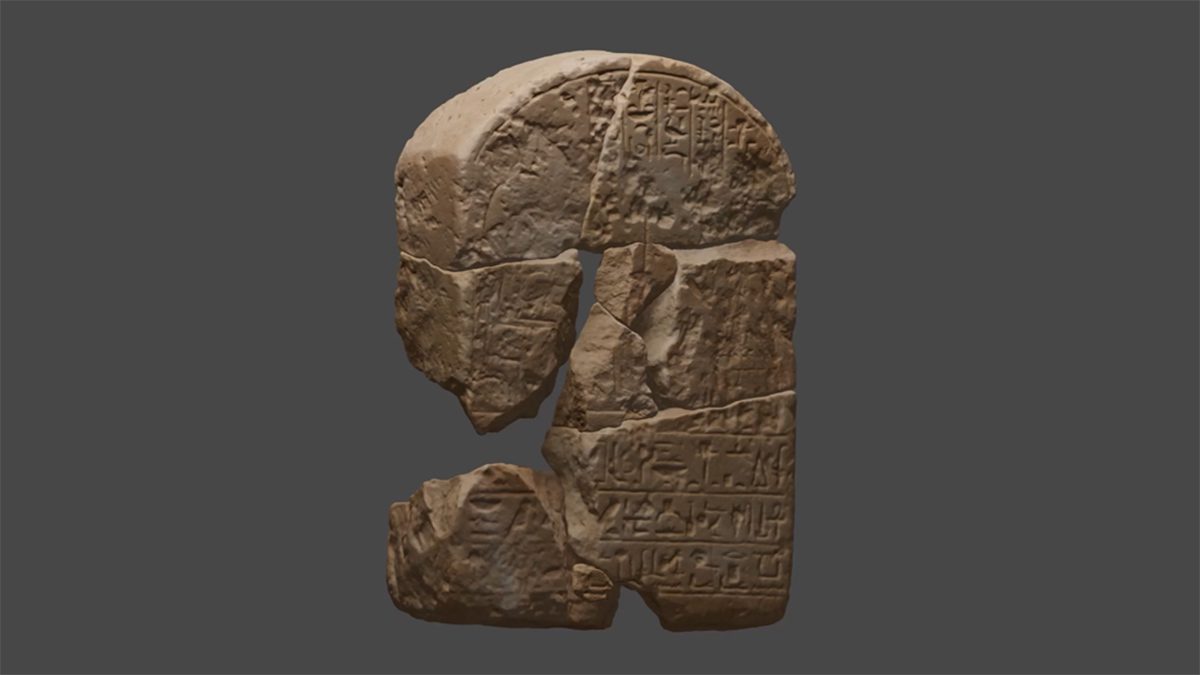Associate Archaeologist Amy Wilson, part of Chronicle Heritage’s International Heritage team, recently presented a paper at the American Research Center in Egypt’s (ARCE) Annual Meeting. Her research presents the study of a stela (WH 255) dating to the mid-18th Dynasty (ca. 1550-1292 B.C.), dedicated by the Viceroy of Nubia, Usersatet.

Usersatet was an ancient Egyptian official in charge of the Nubian provinces who served under both king Amenhotep II and Thutmose IV. His corpus of over 30 inscribed monuments suggests that he lived a prolific life before suffering a public fall from grace. Many of Usersatet’s monuments have been subjected to damnatio memoriae (deliberate removal of names and images from records and monuments and similar drastic actions to erase a person’s existence from history).
According to ARCE , a stela (plural stelae) is “an upright monument containing information in the form of texts, images or a combination of the two. Stelae have been used to commemorate people or events, to delineate physical spaces or as objects through which to access the dead or divine.” Stelae are usually carved from stone. The stela referenced in Amy’s research was found at Site 4 of Wadi el-Hudi, near what may be a Middle Kingdom temple to the Egyptian deities Hathor and Satet, both of whom are referenced in the stela. The stela’s main text contains an offering formula, intended to be read aloud by visitors requesting life, prosperity, and health for Usersatet.
View an animated 3D model of the stela here.
The stela’s existence is especially interesting because it dates to approximately 300 years after all mining activity had ceased at Wadi el-Hudi. What brought the Viceroy of Nubia to this remote site in the Eastern Desert? Who returned to the site to carry out the act of damnatio memoriae against him, and for what reason? These are just some of the questions that Amy addresses in her paper.
In the coming months, Amy and her co-authors will move to publish their findings on the stela’s archaeological context, its transcription, transliteration, and additional commentary. Congratulations on this incredible achievement, Amy!

